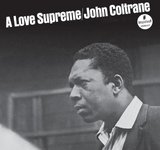
John Coltrane's Love Is Still Supreme at Age 60


The spiritual songs have continued in the black community into the twenty-first century and provided the foundation for the phenomenal development of gospel, blues, and jazz.
John Coltrane's Love Is Still Supreme at Age 60


The spiritual songs have continued in the black community into the twenty-first century and provided the foundation for the phenomenal development of gospel, blues, and jazz.